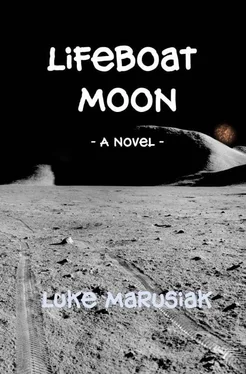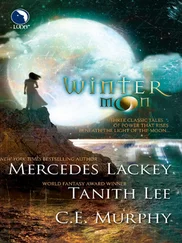Luke Marusiak - Lifeboat Moon
Здесь есть возможность читать онлайн «Luke Marusiak - Lifeboat Moon» весь текст электронной книги совершенно бесплатно (целиком полную версию без сокращений). В некоторых случаях можно слушать аудио, скачать через торрент в формате fb2 и присутствует краткое содержание. Год выпуска: 2018, ISBN: 2018, Издательство: Kindle, Жанр: sf_postapocalyptic, на английском языке. Описание произведения, (предисловие) а так же отзывы посетителей доступны на портале библиотеки ЛибКат.
- Название:Lifeboat Moon
- Автор:
- Издательство:Kindle
- Жанр:
- Год:2018
- ISBN:978-1-973-59164-1
- Рейтинг книги:5 / 5. Голосов: 1
-
Избранное:Добавить в избранное
- Отзывы:
-
Ваша оценка:
- 100
- 1
- 2
- 3
- 4
- 5
Lifeboat Moon: краткое содержание, описание и аннотация
Предлагаем к чтению аннотацию, описание, краткое содержание или предисловие (зависит от того, что написал сам автор книги «Lifeboat Moon»). Если вы не нашли необходимую информацию о книге — напишите в комментариях, мы постараемся отыскать её.
That’s the fate of Moon Base Armstrong after an unexpected event strands 137 people.
They all volunteered to set up the base, not be humanity’s last stand. The urgent, day-to-day life and death struggle to make the moon base self-sustaining gives way to despair, fear, and hope.
(This is the full five part novel.)
Lifeboat Moon — читать онлайн бесплатно полную книгу (весь текст) целиком
Ниже представлен текст книги, разбитый по страницам. Система сохранения места последней прочитанной страницы, позволяет с удобством читать онлайн бесплатно книгу «Lifeboat Moon», без необходимости каждый раз заново искать на чём Вы остановились. Поставьте закладку, и сможете в любой момент перейти на страницу, на которой закончили чтение.
Интервал:
Закладка:
There were cries of despair, some still punctuated with denial. “No! No!” rippled through the assembly. The director let the group take in the enormity of the catastrophe for a few moments.
Director Collier nodded to the ArmCon who advanced to the next image. The wail increased in volume at the picture of the incinerated earth. It was a different, foreboding planet. Its continents were nearly indistinguishable and dark. Its seas were burnt orange. The earth was streaked with simmering orange residue. There was a wavy penumbra between the earth and dark space; the remnants of atmosphere. The sound of grief, almost at a cue, dropped to quiet sobs.
12
“We are humanity’s last stand,” the director continued as the image of their ruined planet was replaced by an overhead diagram of the Shackleton Crater showing the outline of Moon Base Armstrong. She pointed to the diagram. “This moon base and our four supply pods orbiting overhead give us a fighting chance. We are colonists.” She indicated the opposite side of the crater. “Twenty-one kilometers away from Moon Base Armstrong is Japan Station with sixty-four colonists. We’ll work together to save humanity.”
Mark stared at the diagram. The robots that preceded them to the moon carved out ledges at the top of the steep crater that allowed for internal burrowing of habitation tubes. The ledges were as wide as four lane highways and also enabled a 1.7 kilometer plexiglass walkway that Mark thought of as his mile long walk to the air reactor. The ledges allowed passage from the shadowed crater area to the edge where the sun illuminated the extensive solar array ninety-seven percent of the time. The air and material processing reactors were next to the array.
Another NASA and ESA — European Space Agency constructed ledge traversed down the steep wall of the crater at a slope of two degrees in a clockwise corkscrew nearly all of the 4.2 kilometer depth. The bottom of the crater had ice needed to provide a consistent source of water. Most of Moon Base Armstrong’s consumables were from earth and the last of those consumables were in four very precious supply pods orbiting overhead.
The bottom of the crater beckoned. Self-sustainability — human survival itself — was at stake. The automated digger never made it to the bottom. It stopped 300 meters short either due to mechanical failure or lack of power. The original plan was to wait for arrival of the next crew and then go down to find out. A new plan was needed.
The projected diagram showed dotted lines of the interior of Moon Base Armstrong. At the crater’s edge was the large hangar and command center where the shift leads did their work. The Nexus was behind the hangar and angling from the Nexus like spokes from a wheel were three large habitation tubes buried in the side of the crater’s wall.
Habitation Tube One comprised of the large med-bay, the University Pod, and ended with a large circular room that served as Director Collier’s quarters. Habitation Tube Two consisted of the Manufacturing Pod, the Agriculture Pod, and ArmCon Little’s quarters. Habitation Tube Three consisted of everything else: food and consumable storage, spare parts, and large machinery that had yet to be installed.
Living quarters were enclosed rooms distributed around Habitation Tube Two and Habitation Tube Three. Mark pondered that the crew, other than Director Collier and ArmCon Little, were well dispersed in what looked like notches on the diagram.
Mark stared at the projection. His fears transformed everything he viewed. The Nexus, hangar, and habitation tubes are the only place of sweet breathable air. The base is the only place we don’t suffocate to death.
The director pointed to the side opposite Moon Base Armstrong. “Japan Station is situated in the shade with their solar array and reactors in the sun similar to us. They’ve gotten a large pipe into the crater bottom and are scavenging water and material. We’ll need to figure out how to link up with them so that this crater becomes humanity’s new Garden of Eden.”
There were snorts in response to the Garden of Eden comment. Chuck raised his hand. ArmCon Little frowned but the director acknowledged the interruption. “What about the China base?” Chuck asked.
Director Collier took a deep breath. “China set its base up on a different philosophy than Moon Base Armstrong and Japan Station.” She chatted briefly with ArmCon Little and he replaced the projected crater image to one of the entire moon. Director Collier pointed to the center. “China set up on the equator. Half of their base consisted of massive energy storage fuel cells because, at the equator, the moon has fourteen days of intense sunlight and fourteen days of dark shade. That’s a plus 123 degrees to minus 153 degrees temperature swing.”
“Was that temperature Celsius?” Doug asked.
“You civilian contractors make me nuts,” ArmCon Little answered. “In the sun it’s a scorching 253 degrees and in the shade it’s minus 243 degrees Fahrenheit.”
“Huxley,” the director admonished, “we’re all colonists now.” She turned back to Chuck. “Here we control what’s put in the shade and what’s put in sun.”
“We’re not sure,” the ArmCon added, “if the China base was shielded from the gamma ray burst.”
“Could we go and find out?” Chuck asked.
“It’s 1,642 kilometers away,” the director answered. “That’s over a thousand miles. We have no way to explore that far.”
“What would have happened,” Doug continued the question, “if the China base was hit with the burst?”
“The same thing that happened to four of our eight orbiting supply pods. It would’ve been blown to dust by that much energy. We were fortunate four of our orbiting pods were shielded by the moon itself.” She shook her head. “And for those who wonder about Mars — we’re also pretty sure the thirty-four person Mars Station was exposed to the gamma ray burst.” She extended her hand and swung her arm from one side of the assembly to the other. “Look left and right. We’re it.”
The director whispered to ArmCon Little who changed the projected image from the moon back to the Shackleton Crater. Director Collier continued. “We need unity and we need each of you to do your part.” She swallowed. “I know you’ve all been shaken by what you’ve seen, by what’s become of our sweet earth. For the last several weeks we were all hoping against hope.”
Mark stared at Moon Base Armstrong’s two leaders and marveled how they faced grim reality in unflinching fashion. He doubted he’d have been so composed.
Director Constance Collier heaved a deep sigh. “We have to face our future without earth. We are the future of our species. We’ve got to take what we have,” she pointed to the image of Moon Base Armstrong, “and make it a self-sustaining home. We’re going to talk about our steps to do that.”
On this cue the director stepped to the side and ArmCon Little stepped to the podium.
13
“Let’s talk about the good stuff.” ArmCon Huxley Little said with a wide smile. “We’re all gonna make it and I’m to show you how. We’ve done a lot of work to make this moon base our home.”
Huxley Little’s smile and positive attitude after the projections of the incinerated earth rattled Mark. Mark’s sleep deprived mind was stuck on the searing images. It’s gone. Everything and everyone is gone. He felt a wave of nausea. What’s the point? Sally elbowed him in the side. He turned to her. “It’s going to be okay,” she whispered.
“Jerry Papadopoulos, Gitty Chatterjee, and Jim Staid have something to show us,” ArmCon Little announced. “Please demonstrate what you’ve been able to accomplish this week.”
Читать дальшеИнтервал:
Закладка:
Похожие книги на «Lifeboat Moon»
Представляем Вашему вниманию похожие книги на «Lifeboat Moon» списком для выбора. Мы отобрали схожую по названию и смыслу литературу в надежде предоставить читателям больше вариантов отыскать новые, интересные, ещё непрочитанные произведения.
Обсуждение, отзывы о книге «Lifeboat Moon» и просто собственные мнения читателей. Оставьте ваши комментарии, напишите, что Вы думаете о произведении, его смысле или главных героях. Укажите что конкретно понравилось, а что нет, и почему Вы так считаете.












